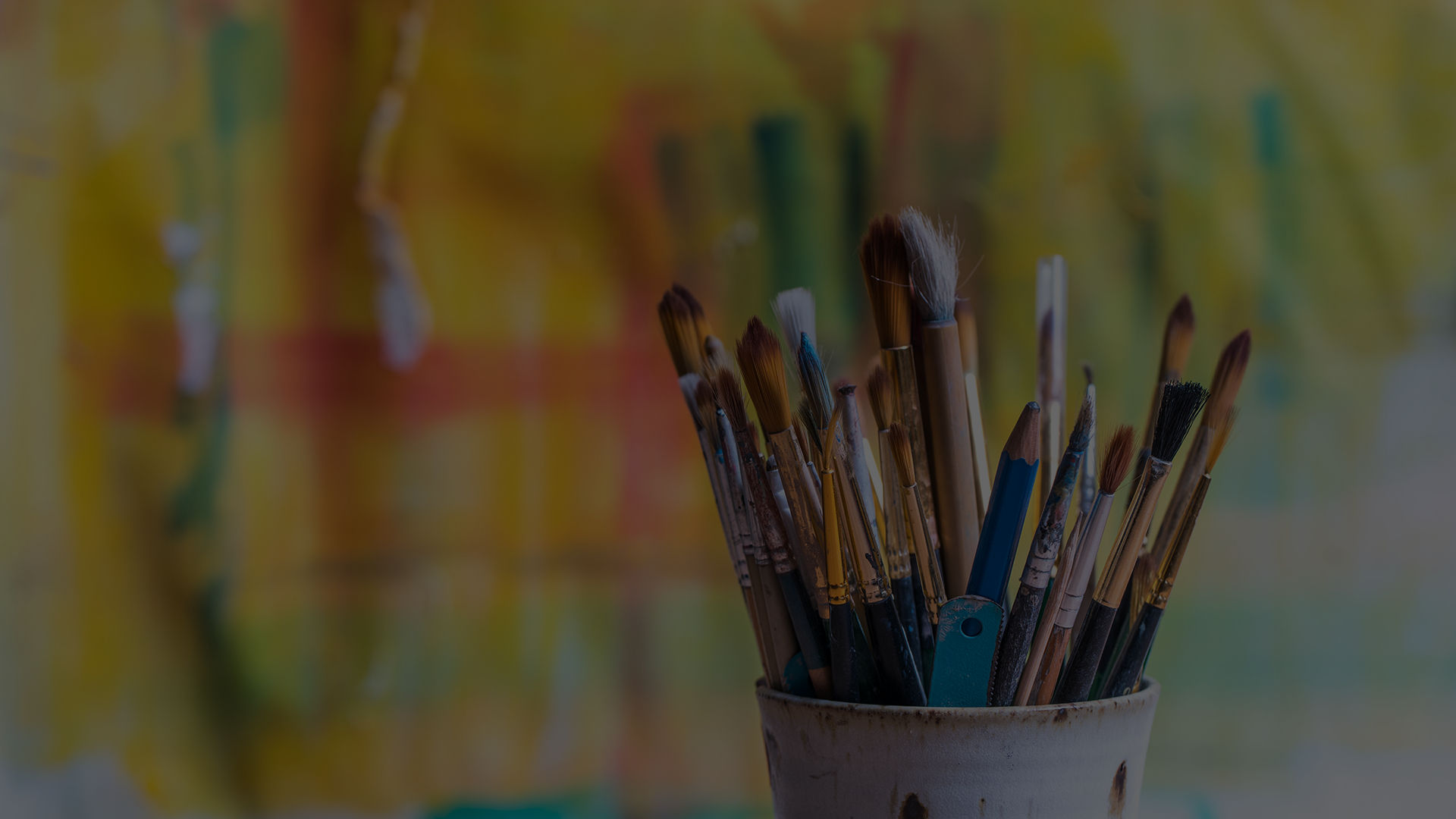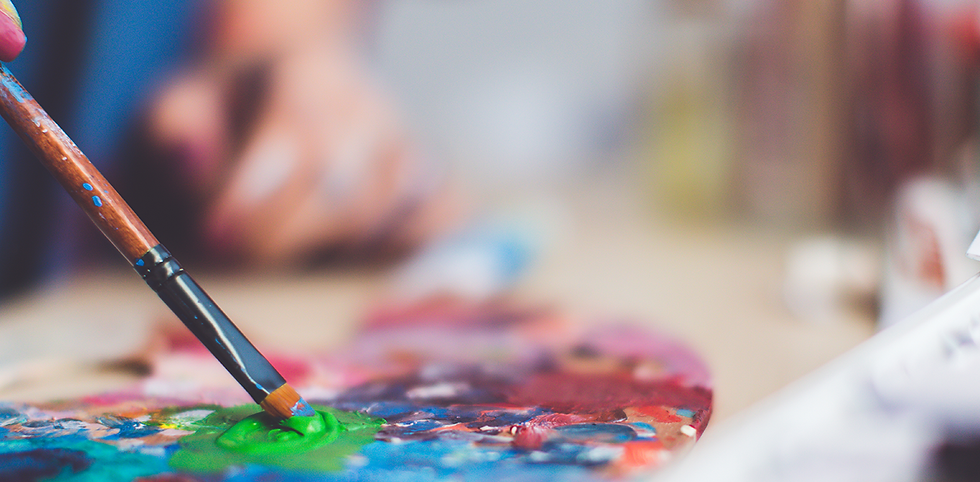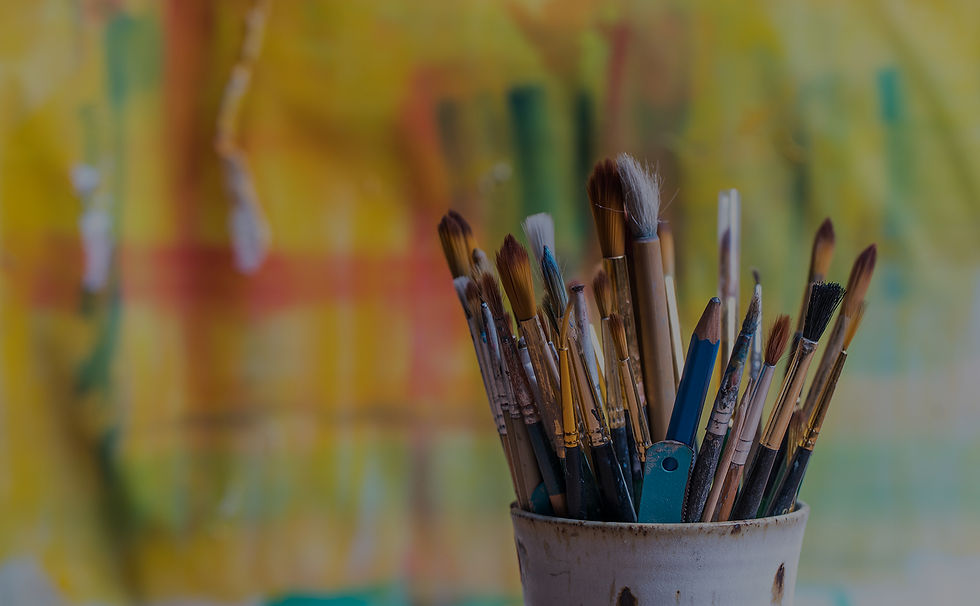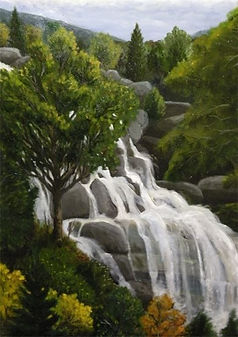


* A valid email address is required to post a message. Your email address will not be published or seen by others.

Thanks for visiting my website. This site isn't meant to be a place of commerce, just some context for the work that I do. It's a gallery you can stroll through at your leisure.
I'm also a musician and composer. You can hear my music at: http://iacmusic.com/artist.aspx?id=128691
A little background: I was mostly a printmaker in my undergrad days - intaglio, relief and a lot of old fashioned stone lithography under the tutelage of master printmaker Kenji Nanao. My first painting instructor was pop artist Mel Ramos. His teacher was Wayne Thiebaud. I got my MFA from Johnson State College in Vermont in 2010.
My early subject matter and style was as diverse as my imagination allowed. I was enamored first with the Dada movement, then conceptual art. Fauvist color caught my eye and filled my canvases as I struggled with bipolar disorder (as so many artists do). I looked back at the impressionists, back further still to the old masters, then jumped I up through cubism and intoto abstract expressionism. During my MFA program at Johnson State, I dallied with figure painting, portrait painting, intricately cut abstract paper pieces, huge dynamic abstract charcoals, wood carving, conceptual art, non-representational painting, and finally landscape.
So, after many artistic wanderings throughout my life, I have finally come to the conclusion that art doesn't have to assault the viewer or insult the eye in order to be meaningful, as many modern artists seem to suppose. The philosophy of aesthetics has had a schism from art, so much so that it seems that ugly is the new beautiful. I agree that many beautiful works of art are only superficial - eye candy - and don't say anything about the human condition, the human psyche, or our social and political institutions. I think that each artist possesses a lens unique to him through which he interprets the experience of living. The focus of that lens is determined by every experience of each individual life. That is why each artist's output is different. My lens happens to put things out which please my eye.
About landscapes: I have spent plenty of time alone in my life, though I am not a lonely person. When we are with others, we tend to focus on them and what they're saying. When we are alone in the landscape, we are more a part of it. We don't see our own image in the place, we see just the place. The trees, and hills and roads and rivers all become the characters. It is like looking at a stage set before the actors take their places. I want the viewer to feel alone in my landscapes and to see what that dredges up in them. How comfortable are we when we're alone? How do we relate to the world when there's no one else in it? How does being alone make us feel? Are we comfortable with who we are? When you're alone, you can truly examine who you are. You're not playing a part, as we so often do in social situations - you are yourself - what does that mean? The landscape asks these questions. If you don't feel yourself in the landscape then it might just as well be another motel room painting. I want you to inhabit the painting, or at least to visit it for a while.
Genre Paintings: I've begun looking at, and painting, ordinary scenes of common people doing common things. This tradition goes back to the 16th Century in Holland. Genre paintings captured, not nobility, not mythology, not religion, but life at its heart how it was lived by everyday people. These paintings appealed more to the middle classes - the very people depicted in genre paintings. They are a slice of life, a snapshot. They are paintings that will carry a bit of our present age on into the future, and in 100 years people can look upon them and say, "That's what life used to look like in the 2020s."
Thanks again for visiting!
